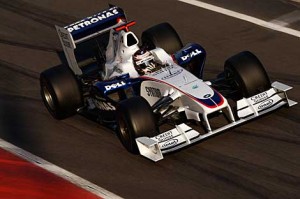KERS and the Concorde Effect
 Of all the changes made to the Formula One regulations for 2009, one of the most controversial has been the Kinetic Energy Recovery System or KERS. These devices store energy created under braking which can then be converted into power at the touch of a button, giving a power boost of up to 80hp.
Of all the changes made to the Formula One regulations for 2009, one of the most controversial has been the Kinetic Energy Recovery System or KERS. These devices store energy created under braking which can then be converted into power at the touch of a button, giving a power boost of up to 80hp.
All the teams have spent vast sums of money developing KERS but it is still not clear which of them, if any, will deploy the device when the season begins at Melbourne in March.
This expenditure also seems to be at odds with the current cost-cutting drive in Formula One. In fact it’s hard to find many people with a good thing to say about KERS.
Renault’s Flavio Briatore:
We know already that for 2010, with the option of the standard KERS, whatever money we spend this year is for one year only. And in this kind of environment I think its completely unnecessary.
Ferrari’s Luca di Montezemolo:
I’m not against the principle of KERS – it’s very important to put in front of the teams research that benefits the environment – but the way it is at the moment is a mistake.
And now it seems Bernie Ecclestone has never wanted it:
I have always been against KERS. Whatever they use in F1 they won’t use in a road car, but if that is to be the idea then why not develop it in touring cars. It costs a lot of money when we are trying to save it.
About the only person who seems to want KERS is BMW’s Mario Theissen:
KERS is important for Formula One because it will put F1 into the role of a new technology pioneer. Obviously, we think KERS is important to BMW because we have put a lot of effort on it. We agreed that the cost of KERS was quite significant, but the real thing is that when we discussed it a month ago the money had been spent already on development, so it would be the worst thing to spend money on something you don’t use.
There is something in economics called a sunk cost; a cost that cannot be recovered once it has been incurred. The money spent on KERS development so far is a sunk cost and Theissen argues that it would be the “worst thing” to have spent money developing KERS if it was not used. But there is also something called the ‘sunk cost fallacy’ or the “Concorde Effect” named for the fact that the British and French governments continued to pour money into the Concorde project long after it was clear there was no real economic case for the aircraft.
This is also known as “throwing good money after bad”.
It will be interesting to see what effect the use of KERS will have in F1 racing in general and overtaking in particular but just because you have already spent money on something doesnt mean you should continue spending money on it. Concorde was a stunningly beautiful piece of engineering but if KERS doesn’t end up contributing to F1 in any meaningful way the FIA shouldn’t be afraid to drop it.
Image: Martin Hartland
